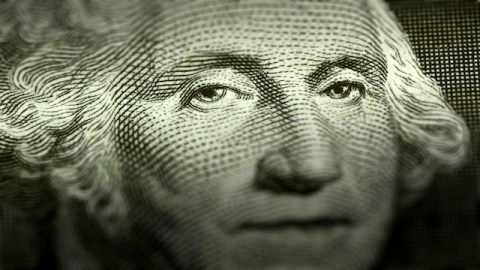The Science of Incentives, Motivation and Choking

Breakthrough ideas don’t happen overnight. Origins of Species was published in 1859, 28 years after Darwin first boarded HMS Beagle;James Joyce spent seventeen years writing Finnegans Wake;and when Edison filed his patent for the light blub, he famously quipped, “We now know a thousand ways not to build a light bulb.”
Plato and Aristotle noted that all philosophy begins in wonder and leisure. They’re right. Most of us don’t have time to think about epistemology or metaphysics. We live in a deadline driven world where good employees are efficient and certainly is more important than curiosity. When it comes to generating ideas, diligence, not contemplation, pays the bills.
Over the years, many business and psychology books have dug through literature on creativity, productivity and incentives attempting to understand what motivates employees intrinsically and the conditions that cultivate productivity. One of the most robust findings is that immediate monetary incentives are detrimental to tasks that require rudimentary cognitive ability. The oft-cited study comes from Dan Ariely and his team of researchers. Their experiment was straightforward: Ariely et al divided participants into three groups, low bonus, medium bonus, and high bonus and had them play six mini games: packing quarters, Simon, recall the last three numbers, labyrinth, dart ball, and roll-up. The rules were straightforward; the better they performed the more money they made.
Ariely and his team ran the experiment and found that, “those who could earn the small bonus (equivalent to one day of pay) and the medium-level bonus (equivalent of two weeks’ worth of work) did not differ much from each other… [however] those who stood to earn the most demonstrated the lowest level of performance.”
In a similar, more recent experiment, neuroscientists from the Caltech devised a clever experiment that required participants to play an arcade game in which they attempted to move a virtual ball into a square target in a small amount of time. The scientists offered financial rewards based on performance, anywhere from zero to $100. Would the cash help? At first, the scientists found that the participants improved as the incentives rose. So far, so obvious. However, after a certain point the participants gave into the pressure and choked. Like Jean van de Velde at the Open Championship, a sizable reward derailed their performance.
All of this occurred while the participants were in a brain scanner, so the scientists were able to gain a sense of what brain regions were at work. The scientists hypothesized that a part of the brain associated with various pleasures – the ventral striatum – would become increasingly active as the incentives rose. What they actually found was a bit different. Indeed, activity in the striatum increased with rising incentives when the participants saw the potential rewards at the beginning of the experiment. Like a wide-eyed kid at Christmas, imagining the possibilities got them excited. However, once the participants engaged the task activity in the striatum decreased with rising incentives. That is, there was an inverse relationship between activity in the striatum and performance: with more cash on the line the participants got less excited. What explains this?
It goes back to a well-documented finding in psychology known as loss-aversion, which explains our tendency to treat equivalent gains and losses differently. For example, we feel worse off losing $100 than we feel better off winning $100; gaining is good, losing is worse. This explains the inverse relationship: with more on the line, the participants started thinking about losing instead of gaining. Once this happened – the point of diminishing returns – their loss aversion kicked in and caused their performance to suffer. As the lead author of the study Vikram Chib explains:
When people see the incentive that they’re being offered, they initially encode it as a gain… But when they’re actually doing the task, the thing that causes them to perform poorly is that they worry about losing a potential incentive they haven’t even received yet… We’re showing loss aversion even though there are no explicit losses anywhere in the task — that’s very strange and something you really wouldn’t expect.
Like Ariely’s research, this finding adds to a growing body of literature that is forcing companies to rethink what motivates their employees. Although we believe that big salaries and bonuses will improve performance – and in many ways they do – this might not be entirely true. According to this area of study, incentivizing employees with money can come at a cost.
This being said, working under pressure isn’t necessarily bad for performance. Consider the events surrounding Apollo 13:
In 1970, during Apollo 13’s flight to the moon, a crippling explosion occurred on board, damaging the air filtration system and leading to a dangerous buildup of carbon dioxide in the cabin. If the system could not be fixed or replaced, the astronauts would be dead within a few hours. Back at NASA mission control in Houston, virtually all engineers, scientists, and technicians immediately focused their attention on the problem. Working with a set of materials identical to those on board the spacecraft, they desperately tried to build a filtration system that the astronauts might be able to replicate. Every conceivable material was considered, including the cover of a flight procedure manual. With little time to spare, they came up with something that was ugly, inelegant, and far from perfect but that seemed like it just might do the job. The engineers quickly conveyed the design with enough clarity that the cognitively impaired astronauts were, almost unbelievably, able to build the filter. It worked, and three lives were saved.
The problem with extreme pressure is that it isn’t good for nurturing creative thinking and productivity in the long run. Harvard professor Teresa Amabile, who brings this example to life and studies creativity at the individual and group level, writes that:
Time pressure is one of the most interesting forces we studied. Although occasional time pressure for short periods can be exhilarating, using extreme time-pressure to stimulate positive inner work life, for weeks on end or even in the short run, is playing with fire. If managers regularly set impossibly short time-frames or impossibly high workloads, employees become stressed, unhappy, and unmotivated—burned out. Yet, people hate being bored. It was rare for any participant in our study to report a day with very low time pressure, such days—when they did occur—were also not conducive to positive inner work life. In general, then, low-to-moderate time pressure seems optimal for sustaining positive thoughts, feelings, and drives.
So it was with Darwin, Joyce and Edison, who, after years of incubating and testing their ideas, stumbled upon their breakthroughs. These thinkers weren’t under a deadline; they weren’t in it for the money. And that’s why they succeeded. They were intrinsically motivated to discover, write and invent for themselves.
Incentives do a good job of influencing people to care enough to be respectably productive – no need to throw the baby out with the bathwater. But they don’t cultivate intrinsic motivation. That comes from somewhere else: genetics, parenting, environment, maybe even the muses. Wherever it is, companies and individuals shouldn’t forget that great ideas begin in wonder and leisure, are incubated over years, improve with time and require patience.
This might be interesting for those looking for further reading.





